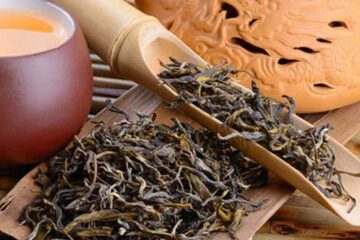Piment Coréen, or Korean chili peppers, forms the fiery backbone of Korean cuisine. These peppers, often dried and ground into flakes or powder (like Gochugaru), are celebrated for their vibrant color, smoky aroma, and varying levels of spiciness. They are not just a spice but a cultural icon, deeply embedded in Korea’s culinary traditions.
The Scoville Scale is a universal tool for understanding chili pepper heat, measured in Scoville Heat Units (SHU). For Korean chili peppers, this scale highlights their distinct position in the spice spectrum, from mild varieties suitable for anyone to fiery options that excite spice enthusiasts.
Understanding the Scoville rating of Korean peppers enhances appreciation for their versatility. Whether you’re preparing Bibimbap, Kimchi, or Tteokbokki, knowing the heat level ensures the perfect balance of spice and flavor in your dishes.
The Scoville Scale: Understanding the Heat
The Scoville Scale, created by Wilbur Scoville in 1912, measures the capsaicin content in peppers. Capsaicin is the compound responsible for a chili’s spiciness. This scale helps chefs and food lovers identify the heat level of peppers and choose ingredients accordingly.
Capsaicin is measured through a process involving sugar-water dilution until the heat is no longer detectable. Korean chili peppers, like Gochugaru, typically fall between 1,000 to 10,000 SHU, offering a moderate heat that’s both approachable and flavorful.
Compared to fiery peppers like habaneros (100,000+ SHU), Korean chili peppers are mild to moderately spicy. For example, Cheongyang chili peppers are among the spiciest Korean varieties, averaging around 10,000 to 20,000 SHU, while Gochugaru stays on the milder side.
Varieties of Korean Chili Peppers and Their Heat Levels
Gochugaru, made from sun-dried red peppers, is a staple in Korean cooking. Its mild heat, typically ranging from 4,000 to 8,000 SHU, adds warmth and depth without overwhelming dishes. It’s indispensable for making Kimchi and seasoning stews.
Cheongyang chili peppers pack a punch, with Scoville ratings between 10,000 and 20,000 SHU. These peppers are ideal for spice lovers and are often used in soups and side dishes to add an extra kick.
Korean cuisine also features sweet and mild peppers like Dangjo pepper, with negligible heat, catering to diverse palates. Each variety adds a unique touch to Korean dishes.
Culinary Applications of Piment Coréen
Korean dishes are incomplete without chili peppers. Recipes like Kimchi rely heavily on Gochugaru for their characteristic spice and color. Meanwhile, Tteokbokki, a popular street food, gets its fiery kick from Gochujang.
Gochujang, a fermented chili paste, is a versatile condiment made from chili powder, rice, and soybeans. Its balanced heat and sweetness make it perfect for marinating meats, spicing up soups, or glazing vegetables.
Piment Coréen has made its way into global cuisines. From Korean-style tacos to spicy pasta, its unique flavor profile blends seamlessly with various culinary traditions.
Health Benefits and Nutritional Value of Korean Chili Peppers
Capsaicin, the active ingredient in chili peppers, is known for its metabolism-boosting and anti-inflammatory properties. Regular consumption can support heart health and aid in weight management.
Korean chili peppers are low in calories but rich in vitamins A, C, and antioxidants. These nutrients boost immunity, improve skin health, and combat oxidative stress.
While generally safe, excessive consumption of spicy foods may cause stomach irritation. Moderation is key to enjoying the benefits without discomfort.
Korean Pepper Cultivation and Regional Differences
Korean chili peppers thrive in warm, sunny climates. Farmers often use traditional drying methods, such as air-drying, to preserve the peppers’ flavor and aroma.
The heat level of peppers can vary depending on where they are grown. Warmer regions typically produce spicier peppers due to higher capsaicin concentrations.
Modern techniques have allowed for the development of new pepper varieties with specific heat levels, catering to both domestic and international markets.
The Global Influence of Korean Chili Peppers
Korean dishes like Bibimbap and Kimchi have gained global recognition, introducing the world to the bold flavors of Piment Coréen.
Chefs worldwide are incorporating Korean chili peppers into fusion cuisine, creating innovative dishes that appeal to adventurous eaters.
Korean pepper-based products are now available in varying heat levels, ensuring they cater to both spice lovers and those with milder tastes.
How to Use Piment Coréen in Your Kitchen
When purchasing Gochugaru or Gochujang, look for reputable brands with vibrant colors and rich aromas. Store them in airtight containers to retain freshness.
Experiment with classic recipes like Kimchi, Bibimbap, and Tteokbokki. For a twist, try adding Gochugaru to pasta sauces or Gochujang to barbecue marinades.
Start with small quantities and gradually increase to your desired heat level. Balancing spice with sweetness or acidity can enhance flavors without overpowering the dish.
FAQs About Piment Coréen and Scoville
What Is the Average Scoville Rating for Korean Chili Peppers?
Korean chili peppers generally range from 1,000 to 10,000 SHU, with variations depending on the variety and growing conditions.
Can I Substitute Piment Coréen with Other Chili Peppers?
Yes, but substitutions may alter the flavor profile. For example, cayenne can replace Gochugaru in terms of heat but lacks its smoky undertones.
How Does Gochujang Compare to Other Chili Pastes?
Gochujang is milder and sweeter than many other chili pastes, making it unique and versatile for various cuisines.
Conclusion
Piment Coréen offers a perfect balance of heat and flavor, making it indispensable in Korean cuisine and beyond.
From traditional dishes to fusion creations, Korean chili peppers invite creativity in the kitchen.
The Versatility of Korean Chili Peppers in Cooking
Whether mild or fiery, Piment Coréen enhances dishes with its unique taste and vibrant color. Explore its possibilities and add a touch of Korea to your meals.


